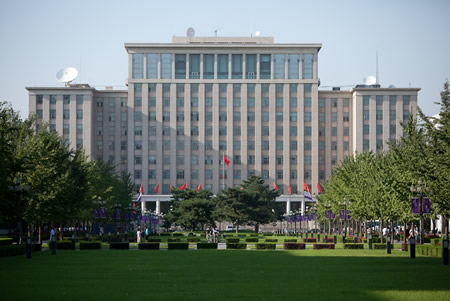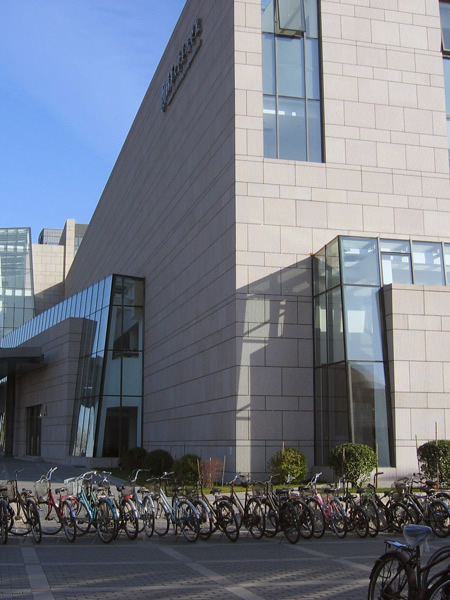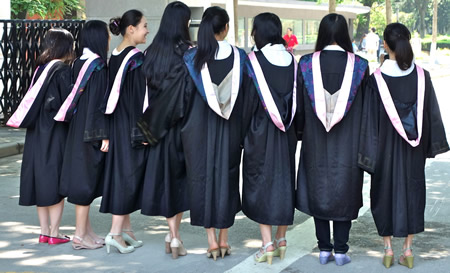« Nia Sanchez is Miss USA 2014 | Main | Wroclaw, Poland, named World Book Capital for 2016 »
June 18, 2014
China Dominates the QS BRICS 2014 University Rankings



Photos: Tsinghua University Campus, Beijing, China. Photos Credit: Jens Schott Knudsen.

Photo: The Institute for Art and Design, Tsinghua University Campus, Beijing, China. Photo Credit: David Wiley.

Photo: Graduation Day at Nanjing University, China. Photo Credit: Kevin Dooley.

Photo: Tower Clock, Lomonosov Moscow State University Campus, Moscow, Russia. Photo Credit: Dmitry Kochetov.

Photo: Museum of Contemporary Art, Universidade de Sao Paulo (University of Sao Paulo), Sao Paulo, Brazil. Photo Credit: Fernando Stankuns.
QS BRICS 2014 University Rankings were published today in London.
QS BRICS University Rankings compare the Top 200 academic institutions in Brazil, Russia, India, China and South Africa. The latest rankings have identified China as the most likely of the BRICS nations to achieve its goal of developing world-class universities.
According to Ben Sowter, QS head of research, “The term BRICS has become shorthand for the idea that the world’s economic future is not in the hands of traditional players such as the US, Europe and Japan.” “To compete with the existing developed world, these fast growing economies need world-class university systems.”
China claims six of the top 10 places, ahead of Brazil (2), Russia (1) and South Africa (1). Russia with 53 institutions in the top 200 is second to China (71). While India is the only nation without a university in the top 10, though its five IIT’s make to the top 20.
BRICS - Top 10 - 2014
• TSINGHUA UNIVERSITY — CHINA
• PEKING UNIVERSITY — CHINA
• LOMONOSOV MOSCOW STATE UNIVERSITY — RUSSIA
• UNIVERSITY OF SCIENCE AND TECHNOLOGY OF CHINA — CHINA
• FUDAN UNIVERSITY — CHINA
• NANJING UNIVERSITY — CHINA
• UNIVERSIDADE DE SAO PAULO — BRAZIL
• SHANGHAI JIAO TONG UNIVERSITY — CHINA
• UNIVERSIDADE ESTADUAL DE CAMPINAS — BRAZIL
• UNIVERSITY OF CAPE TOWN — SOUTH AFRICA
“The development of Chinese higher education over the past 20 years has been nothing short of extraordinary,” adds Sowter. “Universities such as Tsinghua and Peking have now established themselves among the world’s major producers of scientific research.”
China has increased its research and development funding by an average of 18% per year since 2008. Its ‘C9 League’ institutions have been earmarked as challengers to the US ‘Ivy League’, and six of them make to the top 10 in today’s ranking.
Russia, on its part, has announced plans to achieve five universities in the global top 100 by 2020.
Commenting on India, Martin Ince, editor of the QS Higher Education World points out that “China’s big Asian rival, India, has little reason to draw comfort from these rankings. It has only 20 universities and institutions among the 200 we list here, compared to 71 in China, 53 in Russia, 45 in Brazil and 11 in South Africa.” “The Indian university system is strong on a national scale, but our data shows that it holds little attraction for globally mobile students and academics.”
View Here — QS BRICS 2014 University Rankings INDIA
Ben Sowter, head of QS Intelligence Unit, elucidates: “From India’s point of view, there have been notable improvements, too, from Manipal University, from Birla Institute of Technology and Science, and from Amity University, all of which have risen more than ten places since the first BRICS ranking. The biggest fall was at Panjab University (Chandigarh), which was close to the top 100 in 2013 (now in the 141-150 unranked section).”
Meanwhile, Ms. Smriti Irani, India’s new minister responsible for universities, has set a target of raising spending on education to 6% of GDP from less than 4% currently. She expects universities to improve and to align their courses closely with the jobs market. India has ambitions to establish 14 world-class universities under the government’s “brain gain” policy. India’s Prime Minister, Narendra Modi, was today presented the first copy of the QS BRICS 2014 University Rankings by Ms. Irani.
Ben Sowter rightly concludes, “At a time when government spending is stalling in much of the West, the BRICS nations have set their sights on developing world-class universities sooner rather than later.”
|GlobalGiants.Com|







Edited & Posted by the Editor | 9:17 AM | Link to this Post








